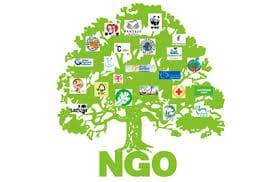Today, the environmental NGO ChemSec released a new corporate benchmarking tool—ChemScore that measures the chemical footprint and other sustainability metrics of 35 of the world’s largest chemical companies. Through ChemScore, investors can access data on the best and worst performers in the chemical industry based on the amount of hazardous chemicals they produce and their efforts to transition to safer, greener alternatives.
The 35 largest publicly-traded chemical companies are assessed based on four key criteria, a company’s: 1) total production of hazardous chemicals; 2) efforts to develop and market safer chemicals; 3) level of transparency and public commitments to phase out certain substances; and 4) track record of accidents and controversies such as fines and liability cases.
“This new chemical industry ranking is a timely and important initiative because it is based on the number of inherently hazardous chemicals produced by each of these 35 companies,” stated Mark S. Rossi, Executive Director of Clean Production Action. “The recent Global Chemicals Outlook report notes that the global chemical industry is projected to double by 2030 but hazardous chemicals and other pollutants continue to accumulate in the environment and in people. We need to drastically reduce the chemical footprint of this industry sector if we are to achieve sustainable materials management in a circular economy.”
Top performer in this year’s ChemScore is the Dutch chemical company DSM. “We salute the frontrunners in ChemScore and are pleased to see the inclusion of GreenScreen® for Safer Chemicals as one of the criteria for ranking companies efforts to design safer chemicals,” added Shari Franjevic, GreenScreen Program Manager at Clean Production Action. “We invite more chemical producers to join DSM, which uses GreenScreen, to use this tool to substitute chemicals of high concern with safer alternatives.”
ChemScore has been developed with input from investors, including Aviva Investors, a global asset manager with £346 billion in assets under management and Chemical Footprint Project (CFP) Signatory, and chemical industry representatives.
“The goal of ChemScore is to drive investors towards chemical industry frontrunners and divest from laggards. The CFP Survey, a program of Clean Production Action, is another tool for investors to assess companies on their chemicals management. To date downstream users of chemicals have taken the survey, but it is equally applicable to chemical producers and we invite them to participate,” added Mark S. Rossi. “We are also pleased to partner with ChemSec in offering Investor Environmental Health Network (IEHN) members with discounts for purchasing ChemScore reports. For details on discounts and IEHN memberships contact Kayla Williams at kayla[at]cleanproduction.org.
Facts & figures from the ranking
- Dutch chemical companies DSM and AkzoNobel have the highest and third highest scores in the ranking.
- In general, European companies perform the best.
- None of the 35 companies fully disclose what kind of chemicals they produce in regions outside of the EU and US (where regulation forces them to disclose it).
- Only three companies score more than ten points (out of 18) in the category that looks at the hazardous chemicals in the companies’ portfolios. These are Linde, Air Liquide (both gas companies), and Indorama Ventures (produces mainly polyester).
- Three companies score 0 points in this category, indicating that they have portfolios full of toxic chemicals.
- Fourteen of the companies produce persistent chemicals. While still flying under the regulatory radar in many regions, these chemicals have proven to be problematic as the levels build up in nature and humans over time.
- Four companies are ahead of the rest when it comes to green chemistry and development of safer chemicals: DSM, AkzoNobel, Sherwin-Williams, and LG Chem.
-
All companies have been given a seven-week window to give feedback on their respective score to potentially raise it. Eighteen of the 35 companies replied.

